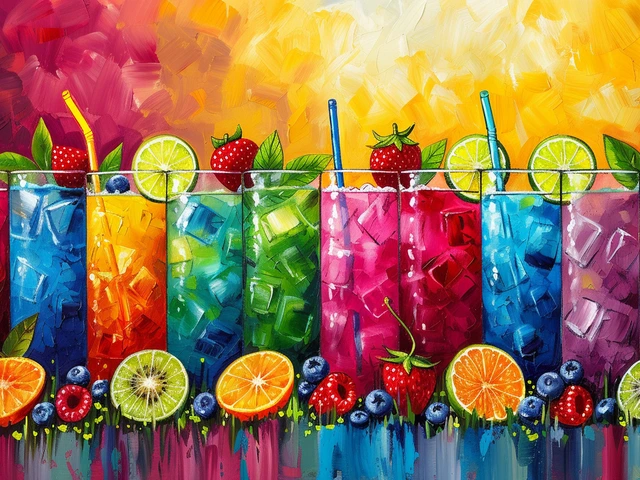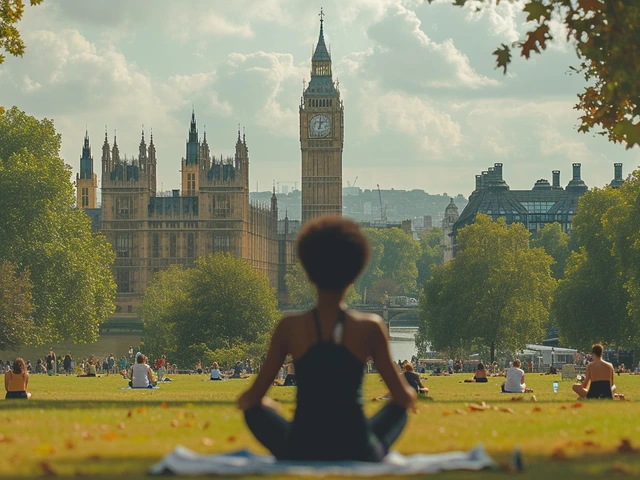
Exploring The Power of Healing through Creative Arts Therapy
Let's begin our story by exploring the magic of human creativity. Isn't it astonishing that we all have an innate ability to create something beautiful from within? Now, imagine combining this intrinsic talent with the science of medicine. That, my dear readers, is the splendid world of creative arts therapies. These are not your usual therapies, mind you, but they play a crucial role in modern medicine. So powerful is this approach, that it can often reach places where words simply cannot.
As a young girl, I recall creating a colourful landscape painting following a particularly upsetting day at school, and instantly feeling a wave of calm wash over me. I wasn't aware of it then, but I was engaging in a form of art therapy! Often dismissed as a simple pastime, the impact of creative arts therapies such as dance, music, art, and drama is profound and deeply therapeutic.
Decoding the Language of Creative Arts Therapies
The world of creative arts therapies is often misunderstood. It's not all about splashing paint on a canvas or strutting your stuff in a dance studio. Rather, it's a structured form of therapy that uses art as a way to ‘process’ emotional issues. Participants, under the guidance of a trained therapist, explore their emotions, improve self-awareness, develop social skills, manage behavior, reduce anxiety, and increase self-esteem.
A little trivia for you – did you know that the professional fields of art therapy, music therapy, dance/movement therapy, and drama therapy emerged in the mid-20th century? There's a rich history behind this form of therapeutic practice, used as it is, to heal individuals undergoing personal challenges, stress, and illness. The goal is to improve their overall wellbeing, not to create a masterpiece. Therefore, no artistic skills are required to get started. So, if anyone is having doubts about whether 'I can do it?', you absolutely can!
Healing Through Visual Imaging: Art Therapy
Art, my faithful friends, is not always just for the enjoyment of onlookers. Art therapy enables individuals to express themselves when they can't find the words. Patients are allowed to draw, paint, or sculpt, and through this process, discover their innermost feelings and fears. Undeniably, the power of creativity allows us to communicate in often surprising ways.
In the therapeutic setting, the therapist sees beyond the literal interpretation of a painting, understanding the subconscious thoughts and emotions that surface during the creation process. A great fun fact here: Art therapy is seen as effective for children with autism; through their art, children can often express thoughts and feelings they would otherwise be unable to convey.
The Rhythm of Healing: Music Therapy
Music has been a natural healer throughout human history, bringing comfort to our hearts in inexplicable ways. I'll be the first to put my hand up and say that belting out a tune or two (often to my Beagle, Sherlock's, dismay) has lifted my spirits on many occasions. The scientific truth behind such instinctive actions is that music indeed impacts our brain waves, pulses, and motor abilities.
Music therapy, as a part of the creative arts therapies, innovatively leverages music's innate therapeutic quality to address physical, social, emotional, and cognitive needs. An interesting fact here: music therapy has been found to improve motor control and emotional expression in patients with Parkinson’s disease - how truly powerful!
The Movement toward Wellness: Dance/Movement Therapy
Much as I love dancing in my socks on my wooden floor, dance therapy extends beyond your typical freestyle jig. Dance/Movement therapy helps to express emotions that may otherwise be difficult to verbalize. This therapy uses movement to promote mental, physical, and emotional growth.
For the kinesthetic learner, the relationship between the mind and body is paramount. Movement has the power to reveal things about ourselves we might otherwise leave untouched. An interesting fact about this form of therapy: Research has shown dance therapy to be effective in the treatment of people with dementia. It helps not only to engage them physically but also emotionally and socially!
A Stage for Wellbeing: Drama Therapy
Last, but by no means least, let us traipse into the world of drama therapy, where participants are encouraged to tread the boards and enact life scenarios. It's much more than merely 'acting'. Participants use performance to explore personal problems and potentials, allowing them an opportunity for insight, growth, and transformation.
Remember that drama therapy is not about who can put on the best performance. Instead, it's all about exploring life's tales in a safe space and understanding how different situations can be navigated. It's intriguing to know that this form of therapy is often used in cancer support groups, helping patients to cope with the stress and emotional turmoil through dramatized personal stories.
In conclusion, my dear readers, the world of creative arts therapies is a wondrous healing journey where artistic mediums become tools of expression, processing, and growth. While modern medicine continues to evolve in terms of technology and scientific advancements, let's never discount the true power of human creativity when it comes to healing!





Write a comment